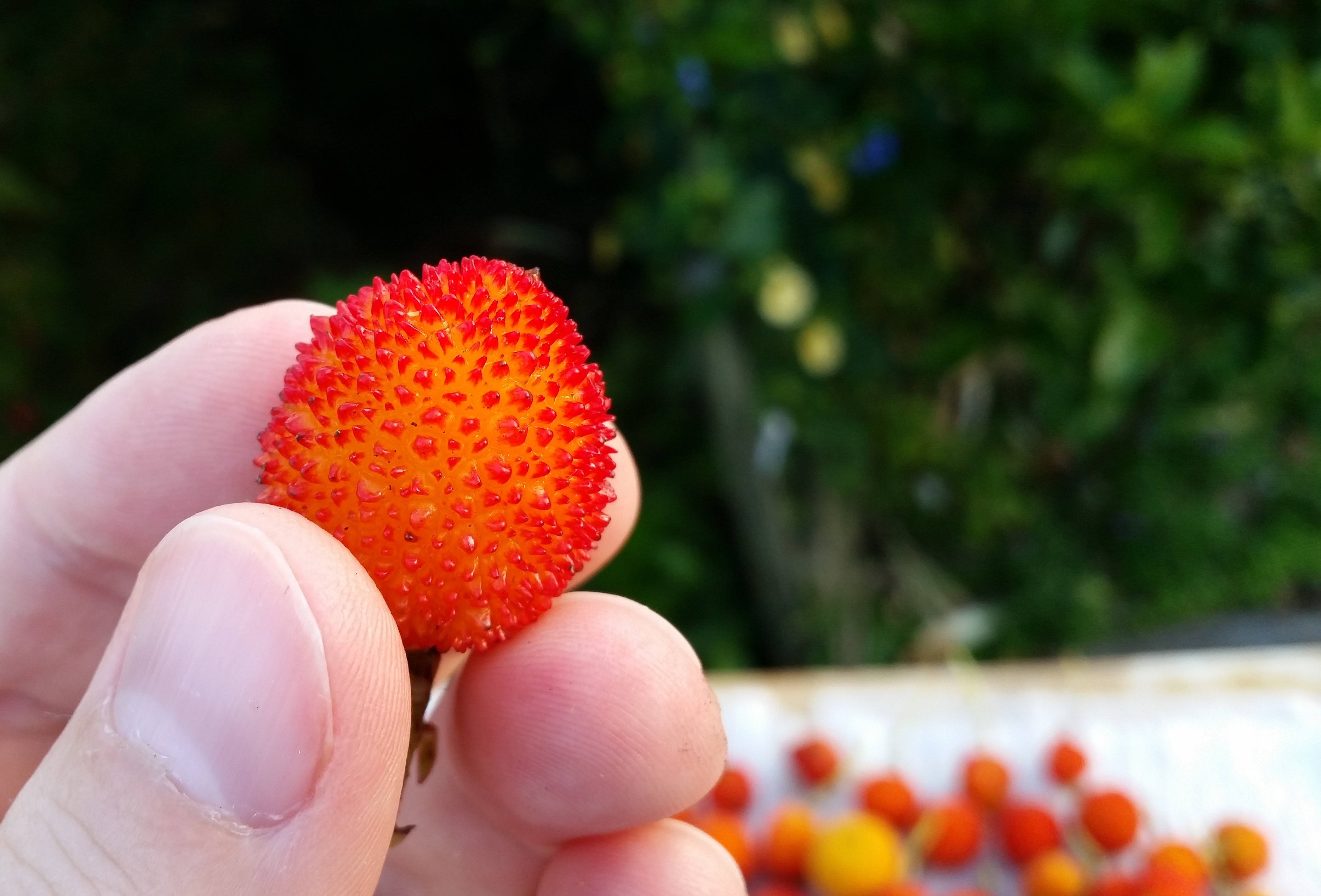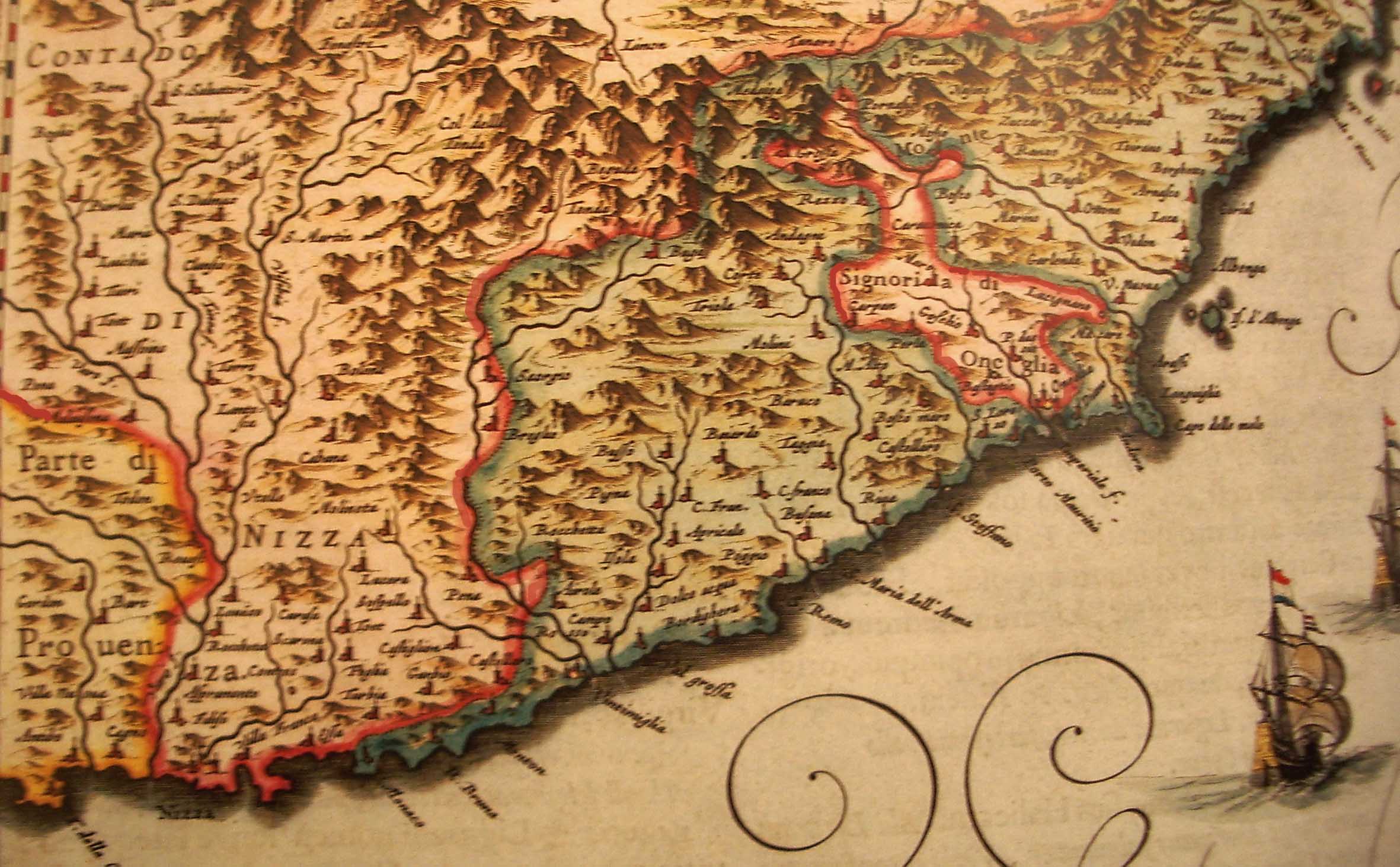|
Jardin Serre De La Madone
Serre de la Madone (6 hectares) is a garden in France notable for its design and rare plantings. It is located at 74, Route de Gorbio, Menton, Alpes-Maritimes, Provence-Alpes-Côte d'Azur, France. It is open to the public (every day except Monday) during the warm months of the year. In 2008, it was being restored to its former condition. The garden was created in 1924–1939 by Lawrence Johnston, who had earlier created in Britain the celebrated Hidcote Manor Garden (1907). It lies on a hillside in the Gorbio valley, with a farmhouse to which Johnston added two large wings. Johnston traveled the world collecting plants, and Serre de la Madone offered an excellent site for plants from subtropical regions. Over the years he created a series of terraces among old olive trees, planted and tended by twelve gardeners. After Johnston's death in 1958 owners maintained it with varying degrees of respect for the original plantings. In 1999 the property was purchased by the non-prof ... [...More Info...] [...Related Items...] OR: [Wikipedia] [Google] [Baidu] |
Arbutus Unedo
''Arbutus unedo'' is an evergreen shrub or small tree in the family Ericaceae, native to the Mediterranean region and western Europe. The tree is well known for its fruits, which bear some resemblance to the strawberry — hence the common name "strawberry tree". However, it is not closely related to true strawberries of the genus ''Fragaria''. Its presence in Ireland also lends it the moniker "Irish strawberry tree", or cain, or cane apple (from the Irish name for the tree, ''caithne''), or sometimes "Killarney strawberry tree". The strawberry tree is the national tree of Italy because of its green leaves, its white flowers and its red berries, colors that recall the Italian flag. Taxonomy ''Arbutus unedo'' was one of the many species described by Carl Linnaeus in Volume One of his landmark 1753 work ''Species Plantarum'', giving it the name it still bears today. A study published in 2001 which analyzed ribosomal DNA from ''Arbutus'' and related genera found ''Arbutus'' to b ... [...More Info...] [...Related Items...] OR: [Wikipedia] [Google] [Baidu] |
List Of Botanical Gardens In France
This list of botanical gardens in France is intended to contain all significant botanical gardens and arboretums in France. Ain * Arboretum de Cormoranche sur Saône, Cormoranche-sur-Saône * Parc botanique de la Teyssonnière, Buellas Aisne * Arboretum de Craonne, Craonne * Arboretum de Septmonts, Septmonts * Arboretum de Vauclair * Espace Pierres Folles, St Jean des Vignes (Soissons) * Jardins du Nouveau Monde, Blérancourt Allier * Arboretum de Balaine, Villeneuve-sur-Allier * Arboretum de l'Ile de la Ronde, Saint-Pourçain-sur-Sioule * Arboretum et parc de la Rigolée, Avermes * Arboretum Paul Barge, Ferrières-sur-Sichon * Parc floral et arboré de la Chènevière, Abrest Alpes-de-Haute-Provence * Jardin botanique des Cordeliers, Digne-les-Bains * Jardins de Salagon, Mane Alpes-Maritimes * Arboretum du Sarroudier, Le Mas * Arboretum Marcel Kroenlein, Roure * Jardin botanique de la Villa Thuret, Antibes * Jardin botanique exotique de Menton (Jardin botan ... [...More Info...] [...Related Items...] OR: [Wikipedia] [Google] [Baidu] |
Gardens Of Provence-Alpes-Côte D'Azur
The Gardens of Provence-Alpes-Côte d'Azur is a list and description of the parks and gardens in the region, which are classified by the Committee of Parks and Gardens of the French Ministry of Culture as among the Notable Gardens of France. Alpes-de-Haute-Provence * Jardins de Salagon in Mane. Five modern gardens, including a garden of perfumes, surrounding a 12th-century priory. * Château de Sauvan in Mane. 18th-century château with a ''jardin à la française''. * Clos de Villeneuve in Valensole. 18th-century Provençal bastide with a garden ''à la française''. Hautes-Alpes * Conservatoire botanique national alpin de Gap-Charance in Gap. A botanical conservatory devoted to Alpine plants. * Jardin botanique alpin du Lautaret in Villar-d'Arêne. A botanical garden specializing in the flowers and plants of the high Alps. Alpes-Maritimes * Château de la Napoule in Mandelieu-la-Napoule. A restored 14th-century castle by the sea with a ''jardin à la française ... [...More Info...] [...Related Items...] OR: [Wikipedia] [Google] [Baidu] |
Succulent
In botany, succulent plants, also known as succulents, are plants with parts that are thickened, fleshy, and engorged, usually to retain water in arid climates or soil conditions. The word ''succulent'' comes from the Latin word ''sucus'', meaning "juice" or "sap". Succulent plants may store water in various structures, such as leaves and stems. The water content of some succulent organs can get up to 90–95%, such as '' Glottiphyllum semicyllindricum'' and '' Mesembryanthemum barkleyii''. Some definitions also include roots, thus geophytes that survive unfavorable periods by dying back to underground storage organs may be regarded as succulents. The habitats of these water-preserving plants are often in areas with high temperatures and low rainfall, such as deserts, but succulents may be found even in alpine ecosystems growing in rocky soil. Succulents are characterized by their ability to thrive on limited water sources, such as mist and dew, which makes them equipped to s ... [...More Info...] [...Related Items...] OR: [Wikipedia] [Google] [Baidu] |
Cycad
Cycads are seed plants that typically have a stout and woody (ligneous) trunk (botany), trunk with a crown (botany), crown of large, hard, stiff, evergreen and (usually) pinnate leaves. The species are dioecious, that is, individual plants of a species are either male or female. Cycads vary in size from having trunks only a few centimeters to several meters tall. They typically grow very slowly and live very long. Because of their superficial resemblance, they are sometimes mistaken for Arecaceae, palms or ferns, but they are not closely related to either group. Cycads are gymnosperms (naked-seeded), meaning their fertilization, unfertilized seeds are open to the air to be directly fertilized by pollination, as contrasted with angiosperms, which have enclosed seeds with more complex fertilization arrangements. Cycads have very specialized pollinators, usually a specific species of beetle. Both male and female cycads bear cones (strobilus, strobili), somewhat similar to conife ... [...More Info...] [...Related Items...] OR: [Wikipedia] [Google] [Baidu] |
Bamboo
Bamboos are a diverse group of evergreen perennial flowering plants making up the subfamily Bambusoideae of the grass family Poaceae. Giant bamboos are the largest members of the grass family. The origin of the word "bamboo" is uncertain, but it probably comes from the Dutch or Portuguese language, which originally borrowed it from Malay or Kannada. In bamboo, as in other grasses, the internodal regions of the stem are usually hollow and the vascular bundles in the cross-section are scattered throughout the stem instead of in a cylindrical arrangement. The dicotyledonous woody xylem is also absent. The absence of secondary growth wood causes the stems of monocots, including the palms and large bamboos, to be columnar rather than tapering. Bamboos include some of the fastest-growing plants in the world, due to a unique rhizome-dependent system. Certain species of bamboo can grow within a 24-hour period, at a rate of almost an hour (equivalent to 1 mm every 90 seco ... [...More Info...] [...Related Items...] OR: [Wikipedia] [Google] [Baidu] |
Rosa Chinensis
''Rosa chinensis'' (), known commonly as the China rose, Chinese rose, or Bengal rose, is a member of the genus ''Rosa'' native to Southwest China in Guizhou, Hubei, and Sichuan Provinces. The first publication of ''Rosa chinensis'' was in 1768 by Nikolaus Joseph von Jacquin in ''Observationum Botanicarum'', 3, p. 7 & plate 55. Description It is a shrub that reaches 1–2 m and grows in hedges or forms thickets. The leaves are pinnate, have 3–5 leaflets, each 2.5–6 cm long and 1–3 cm broad. In the wild species (sometimes listed as ''Rosa chinensis'' var. ''spontanea''), the flowers have five pink to red petals. The fruit is a red hip one to two cm in diameter. The strong branches have a smooth purplish-brown bark, and there may be many to no curved, stocky, flat spines. The alternately-arranged leaves, 12 to 27 cm long, are pinnately divided. The petiole and the rachis are sparsely spiny, with glandular hairs. The leaf blades usually have three o ... [...More Info...] [...Related Items...] OR: [Wikipedia] [Google] [Baidu] |
Buddleja Officinalis
''Buddleja officinalis'' is a deciduous early-spring flowering shrub native to west Hubei, Sichuan, and Yunnan provinces in China.Phillips, R. & Rix, M. (1989). ''Shrubs''. Pan Books, London. Discovered in 1875 by Pavel Piasetski,Bryce, W. J. (2007). Pavel Yakovlevich Pyatsetski (1843 – 1919): his botanical collections in China (1875) and paintings of Chinese gardens. ''Archives of Natural History''. Vol. 39, 171–174. , E-ISSN 1755-6260. Edinburgh University Press. a surgeon in the Russian army, ''B. officinalis'' was named and described by Maximowicz in 1880. Introduced to western cultivation in 1908, ''B. officinalis'' was accorded the Royal Horticultural Society's Award of Merit three years later,Hillier & Sons. (1977). ''Hilliers' Manual of Trees and Shrubs, 4th Edition''. David & Charles, Newton Abbot, England. and the Award of Garden Merit (record 689) in 2002. Description ''Buddleja officinalis'' largely resembles the commoner ''B. davidii'' in shape and siz ... [...More Info...] [...Related Items...] OR: [Wikipedia] [Google] [Baidu] |
Umbrella Pine
''Sciadopitys verticillata'', the or Japanese umbrella-pine, is a unique conifer endemic to Japan. It is the sole living member of the family Sciadopityaceae and genus ''Sciadopitys'', a living fossil with no close relatives. The oldest fossils of ''Sciadopitys'' are from the Late Cretaceous of Japan, and the genus was widespread in Laurasia during most of the Cenozoic, especially in Europe until the Pliocene. Taxonomy Molecular evidence indicates that Sciadopityaceae is the sister group to a clade comprising Taxaceae and Cupressaceae, and has an extremely ancient divergence, having diverged from the rest of the conifers during the early mid-Permian; this would also make it a survivor of the Permian–Triassic extinction event. There is inconsistent evidence regarding the plant family which produced Baltic amber. Both macrofossil and microfossil evidence suggest a '' Pinus'' relative, whereas chemical and infrared microspectroscopy evidence suggest relatives of either ''Agat ... [...More Info...] [...Related Items...] OR: [Wikipedia] [Google] [Baidu] |
Mahonia Siamensis
''Mahonia'' is a genus of approximately 70 species of evergreen shrubs and, rarely, small trees in the family Berberidaceae, native to eastern Asia, the Himalaya, North and Central America. They are closely related to the genus '' Berberis'' and botanists disagree on whether to recognize a separate ''Mahonia''. Many botanists prefer to classify ''Mahonia'' as a part of ''Berberis'' because several species in both genera are able to hybridize, and because there are no consistent morphological differences between the two groups other than the leaf pinnation (''Berberis sensu stricto'' appear to have simple leaves, but these are in reality compound with a single leaflet and are termed "unifoliolate"; additionally their branched spines are modified compound leaves). However, recent DNA-based phylogenetic studies retain the two separate genera, by clarifying that unifoliolate-leaved ''Berberis s.s.'' is derived from within a paraphyletic group of shrubs bearing imparipinnate evergre ... [...More Info...] [...Related Items...] OR: [Wikipedia] [Google] [Baidu] |
Menton
Menton (; , written ''Menton'' in classical norm or ''Mentan'' in Mistralian norm; it, Mentone ) is a commune in the Alpes-Maritimes department in the Provence-Alpes-Côte d'Azur region on the French Riviera, close to the Italian border. Menton has always been a frontier town. Since the end of the 14th century, it was on the border between County of Nice, held by the Duke of Savoy, and Republic of Genoa. It was an exclave of the Principality of Monaco until the disputed French plebiscite of 1860, when it was added to France. It had been always a fashionable tourist centre with grand mansions and gardens. Its temperate Mediterranean climate is especially favourable to the citrus industry, with which it is strongly identified. Etymology Although the name's spelling and pronunciation in French are identical to those for the word that means "chin", there does not seem to be any link with this French word. According to the French geographer Ernest Nègre, the name ''Menton'' c ... [...More Info...] [...Related Items...] OR: [Wikipedia] [Google] [Baidu] |


.jpg)



